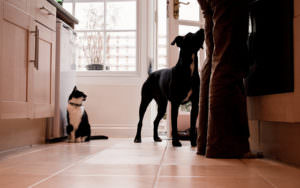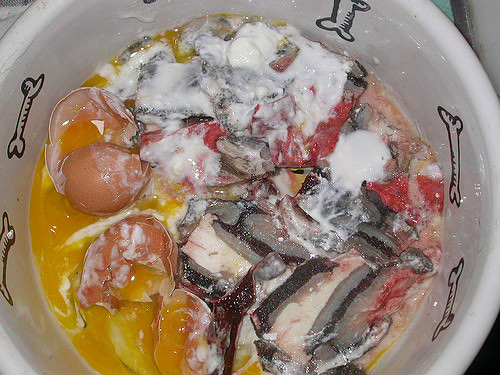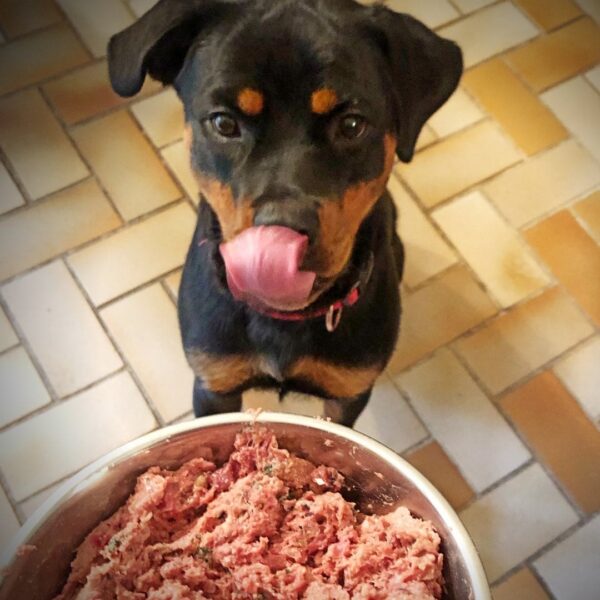
If you watched the eye-opening documentary Pet Fooled on Netflix, you might be left wondering what now? While the film sheds a not-so-flattering spotlight on the American pet food industry, it leaves viewers with few practical solutions for healthy feeding.
The featured veterinarians definitely skew towards a raw, biologically-appropriate feeding protocol, but they also acknowledge that raw diets are yet to be deemed safe by the AVMA.

If you are not yet ready to take the plunge into raw feeding, but you want to break free from the processed kibbles offered by the five major pet food conglomerates, consider a home-cooked diet instead!
From obesity and allergies to diabetes, cancer and deadly reactions, many vets believe that diet is directly responsible for the majority of the ailments they treat on a daily basis. In response, they are shying away from recommending commercial pet food and endorsing natural and whole-food diets instead.

My personal vet recommends the Original CrockPet DietTM for her healthy canine and feline patients, but your veterinarian can help you decide on the perfect recipe for your pets’ individual needs.
It may sound time-consuming and expensive, but fresh, healthy feeding will help you save on trips to the pet store and veterinary bills. Some of the many benefits of home-cooked dog and cat food include:
-
You control exactly what is going into your pets’ bodies
-
Fulfills their dietary needs – nothing more, nothing less
-
Prevents exposure to additives, preservatives and artificial ingredients
-
Eliminates unnecessary and low-quality fillers like corn and soy
-
Helps manage your pets’ weight, blood sugar, kidney function, gut flora, skin conditions, etc
-
Lets you avoid the stress and danger of commercial pet food recalls
-
Improves overall health and potentially prolongs pets’ lives
-
Best of all, they love it!
After watching Pet Fooled, I decided to try a version of The CrockPet Diet with my three senior dogs. The photo above is my own vet-recommended concoction of chicken, beef, pork, kale, sweet potatoes, green beans, kidney beans, turmeric, ground mustard, coconut oil, calcium tablets, and garlic. (Some sources say the proper use of garlic can be beneficial to dogs.) I decided to skip the rice because my dogs are grain-free.
As you can see, they are pretty excited for their new home-cooked food!
If you are ready to try cooking for your own pets, consult your veterinarian. He or she can help you decide on the best-individualized recipe for your pets’ unique needs or refer you to a veterinary nutritionist.
Here are a few tips to make home cooking easier and safer:
-
Never change your pet’s diet before consulting your vet
-
Follow the 40% Protein/50% Veggies/10% Starch rule for dogs unless otherwise directed by your vet. Cats are true carnivores and require at least 60 to 80% protein in their diet
-
Use high-quality, fresh ingredients whenever possible
-
Avoid foods that are known to be dangerous to dogs and cats
-
Follow the recipe carefully and completely to ensure well-rounded nutrition
-
Consider pureeing the finished product with a food processor or hand mixer to ensure that the ingredients are well-mixed and evenly distributed. Cats also prefer the smoother texture
-
Never overfeed! Home-cooked food is very dense and concentrated. Overfeeding could lead to upset stomach, illness or even deadly bloat
-
Prepare food in large batches and freeze excess portions for future use
Best Raw Dog Food Delivery
If you’re not ready to prepare and make all your pooch’s food at home just yet, there are numerous at-home, delivery services, but choosing the right one for your dog can be tricky. Fortunately, we’ve put together a list of the Best Raw Dog Food companies for you.
The post Not Ready To Go Raw? Try A Vet-Approved Homemade Pet Food Diet appeared first on iHeartDogs.com.
via Whisker Therapy
